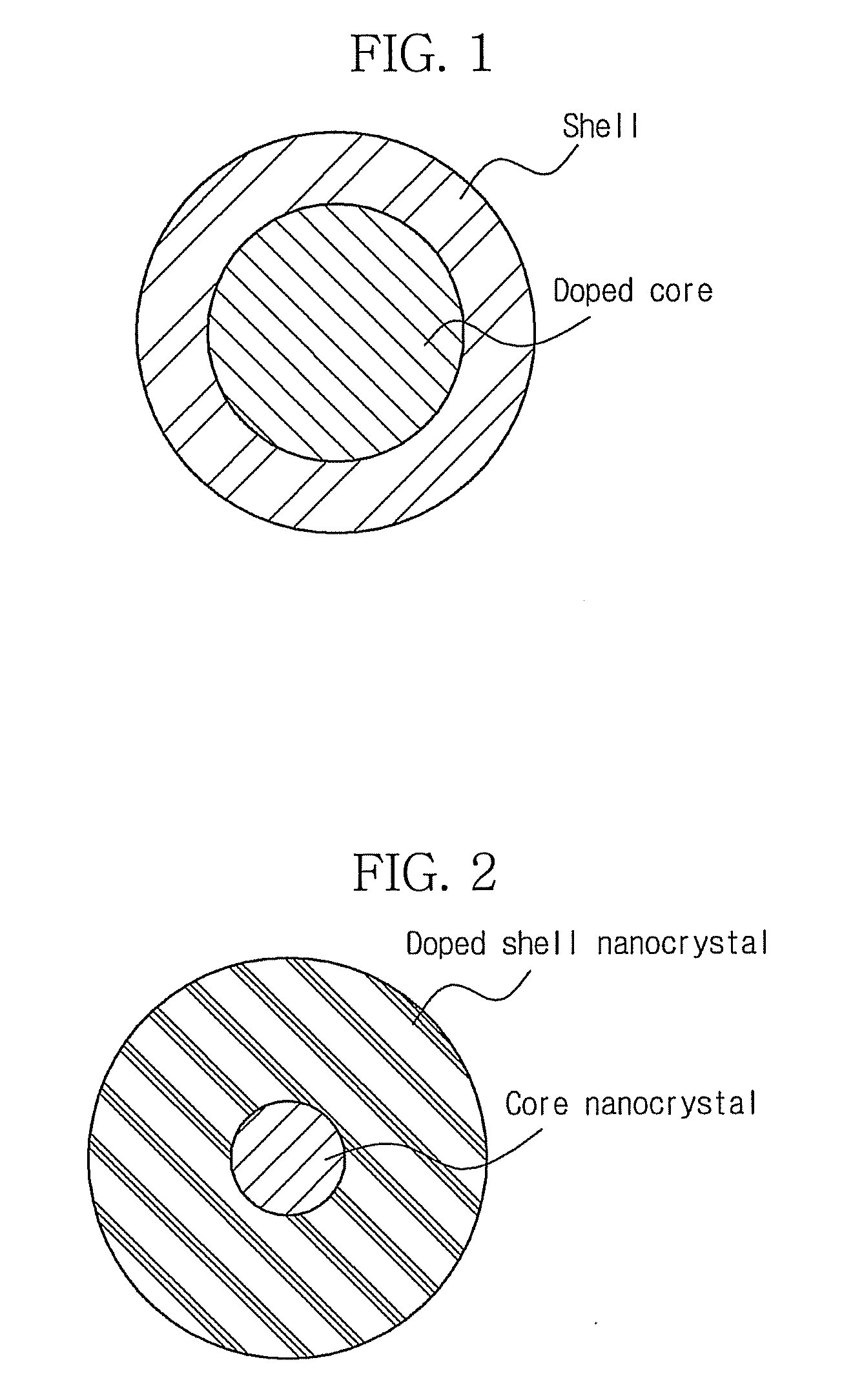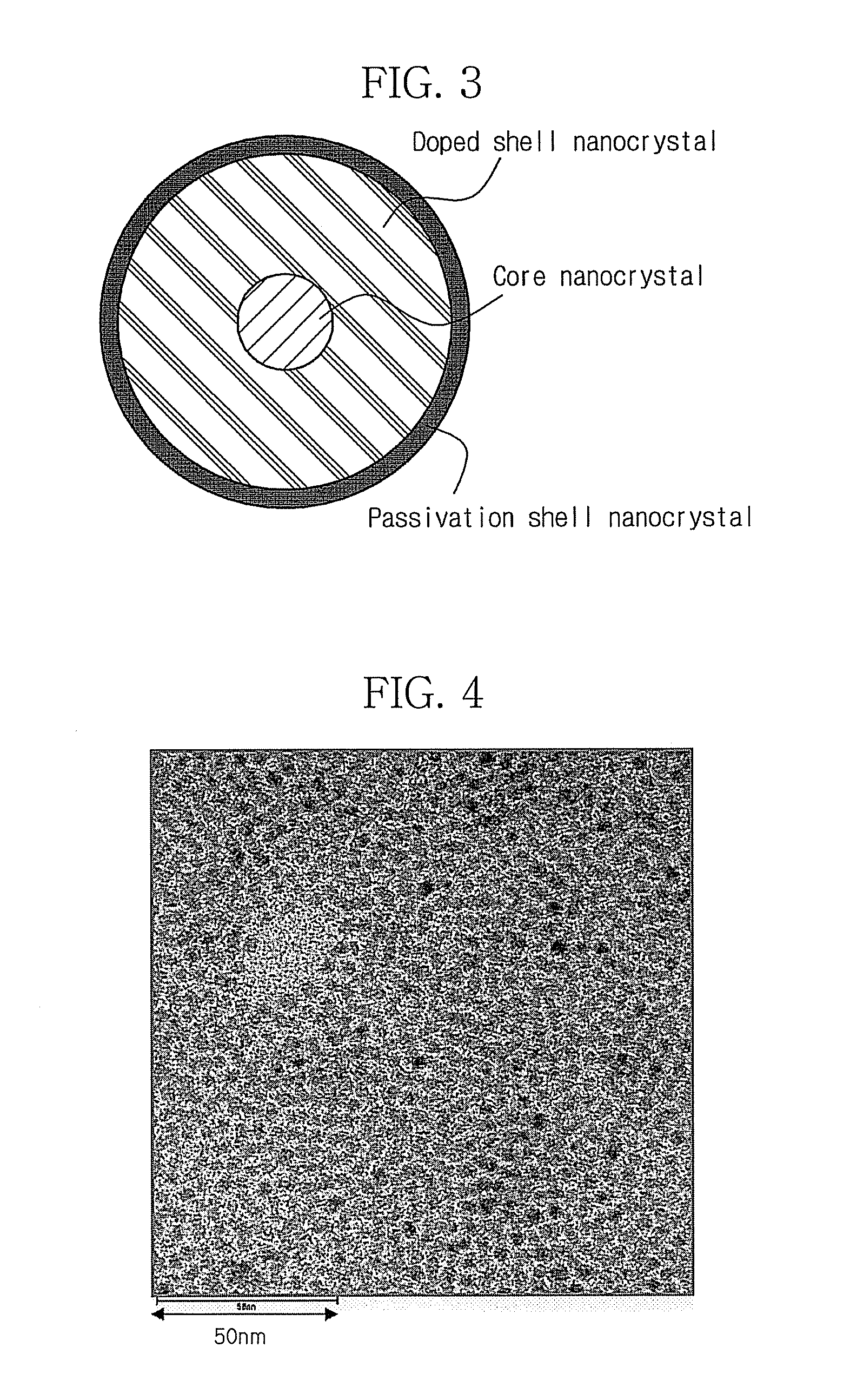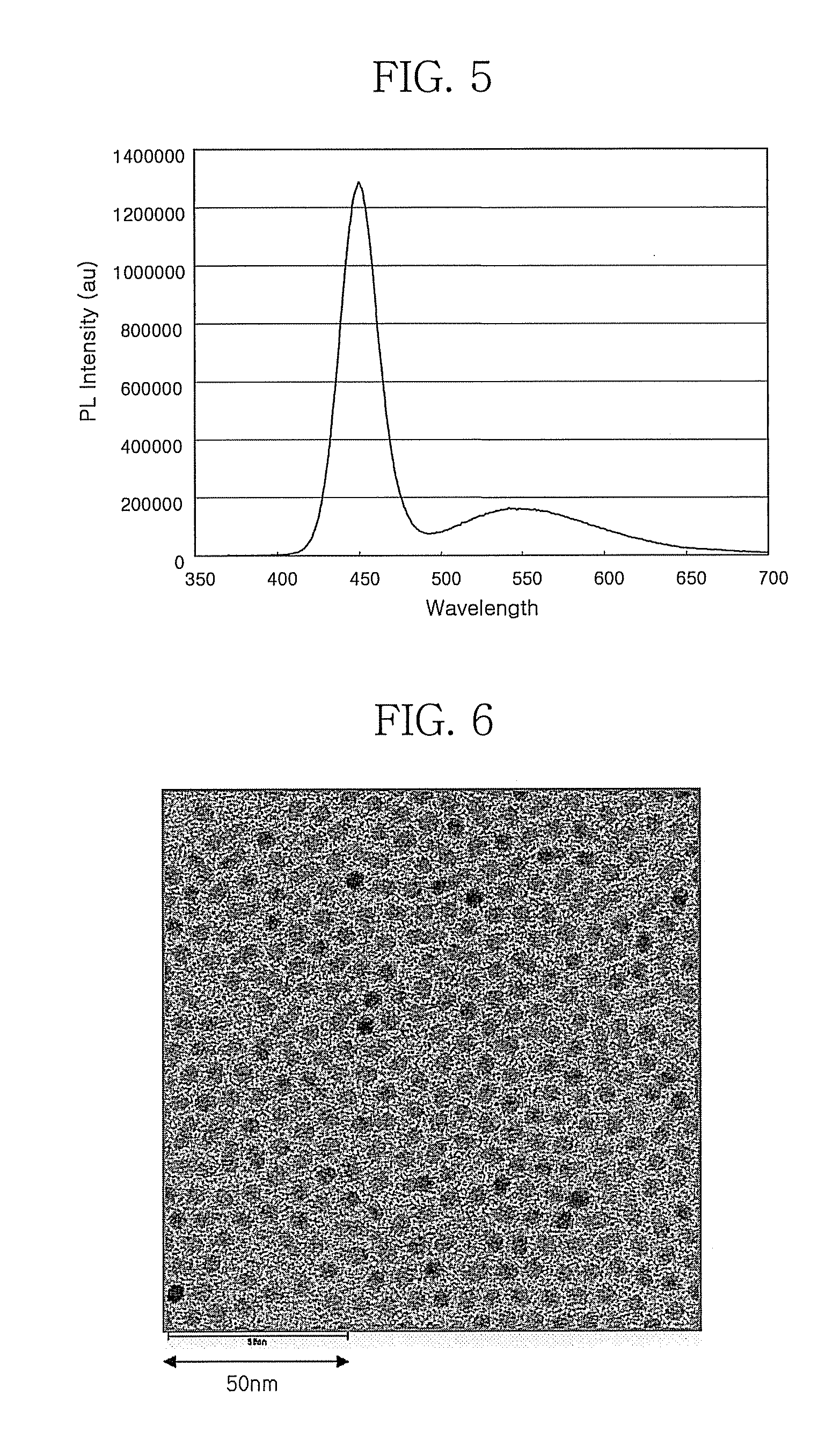Core/shell nanocrystals and method for producing the same
a nanocrystal and shell technology, applied in the field of core/shell nanocrystals, can solve the problems of low luminescence efficiency of nanocrystal structure and difficult control of core nanocrystals, and achieve the effects of high luminescence efficiency, superior reproducibility, and easy control of cystallinity
- Summary
- Abstract
- Description
- Claims
- Application Information
AI Technical Summary
Benefits of technology
Problems solved by technology
Method used
Image
Examples
example 1
Growth of Cu-doped ZnSe Shell Nanocrystal on CdSe Core Nanocrystal
[0058]10 mL of trioctylamine (hereinafter, referred to as “TOA”), 0.067 g of octadecyl phosphonic acid and 0.0062 g of cadmium oxide were simultaneously put in a 100 ml-flask equipped with a reflux condenser. The reaction temperature of the mixture was adjusted to 300° C. with refluxing to prepare a cadmium precursor solution. Separately, a selenium (Se) powder was dissolved in trioctylphosphine (TOP) to obtain a Se-TOP complex solution (Se concentration: ca. 2 M). 1 ml of the 2M Se-TOP complex solution was rapidly fed to the refluxing mixture and the reaction was allowed to proceed for about 2 minutes.
[0059]After the reaction was completed, the reaction mixture was cooled to room temperature as rapidly as possible. Ethanol as a non-solvent was added to the reaction mixture, and the resulting mixture was centrifuged. The obtained precipitate was separated from the supernatant and was dispersed in toluene to prepare a...
example 2
Growth of Cu-doped ZnSe Shell Nanocrystal on CdSe Core Nanocrystal and Passivation by ZnS Layer
[0064]The core nanocrystal prepared in Example 1 was used herein.
[0065]0.063 g of zinc stearate (Zn(St)2) and 10 mL of ODE were put into a reactor and heated under vacuum at 120° C. for 20 minutes. After a solution (0.01 M, 0.1 mL) of copper acetate in ODE and a mixture of the CdSe nanocrystal solution (0.26 mL) and ODE (0.24 mL) were sequentially fed into the reactor, a mixture of a Se-TOP solution (0.2 M, 0.5 mL) and ODE (0.5 mL) was fed into the reactor. The reaction was allowed to proceed at 180° C. for one hour and at 260° C. for one hour. Then, a mixture of zinc acetate (0.1M, 1 ml), tributylphosphine (hereinafter, referred to as “TBP”, 1 mL) and ODE (1 mL), and a mixture of a S-TOP solution (0.4 M, 1 mL) and ODE (1 mL) were sequentially fed to the reactor. The reaction was allowed to proceed at 260° C. for one hour and at 300° C. for one hour.
[0066]After the reaction was completed,...
PUM
| Property | Measurement | Unit |
|---|---|---|
| size | aaaaa | aaaaa |
| diameter | aaaaa | aaaaa |
| luminescence wavelengths | aaaaa | aaaaa |
Abstract
Description
Claims
Application Information
 Login to View More
Login to View More - R&D
- Intellectual Property
- Life Sciences
- Materials
- Tech Scout
- Unparalleled Data Quality
- Higher Quality Content
- 60% Fewer Hallucinations
Browse by: Latest US Patents, China's latest patents, Technical Efficacy Thesaurus, Application Domain, Technology Topic, Popular Technical Reports.
© 2025 PatSnap. All rights reserved.Legal|Privacy policy|Modern Slavery Act Transparency Statement|Sitemap|About US| Contact US: help@patsnap.com



